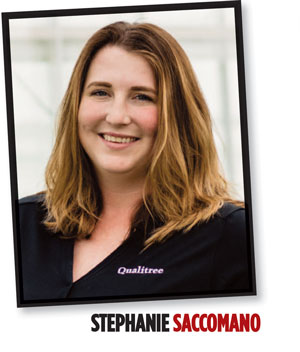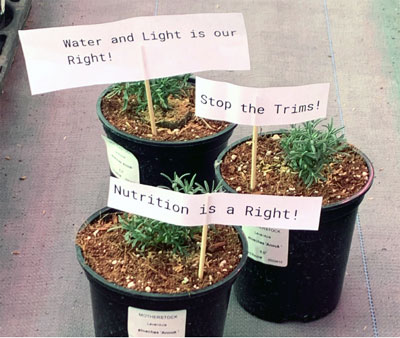5/1/2023
Data-Driven: Empower Your Plants
Stephanie Saccomano

Plants are complex organisms that require specific conditions to grow and thrive. Growing as a profession requires a passionate attention to detail, as so many factors play a role in delivering a product to spec and on time.
We’re mindful of water management, we monitor for pests, measure growth and scan our weather apps on a daily basis. In a controlled environment, we pay particular attention to what we can influence with our facilities and the tools within. And, in order to best understand our environments, we implement sensors. A particular theme of the last few months at the nursery is improving our data collection in the greenhouse. “Meten is weten” is seared in my brain. (Go ahead, Google it!)
I’ve been very much enjoying reading up on the principles of “Plant Empowerment.” It may make you think of a plant protest, but it’s really a data-driven, practical method of growing. It emphasizes the importance of maintaining balances between your environment and your plants—in particular, by using sensors. The basic idea is that plants need to be in balance with their environment, and if any one factor is out of sorts, performance will decline.
But what kind of data are you looking for and what kind of sensors should you use? Well, it’s complicated. It really depends on your specific needs and goals (and your budget). You may only need basic sensors to monitor temperature and humidity, while others may require more advanced sensors to provide data on PAR light and net radiation levels. Ultimately, start with what you currently have and determine if you can optimize there first.
When fine-tuning growing practices, real-time data is essential. Without it, we can essentially be flying blind, making educated guesses about what our crops need based on feel. (That being said, I know a few well-tuned human hygrometers who are pretty accurate!) Additionally, if your sensors are out of calibration, you’re in a blind-leading-the-blind situation where you or your climate control program may be making decisions from faulty data.
For example, a glitch in your temperature sensor means your climate control system will calculate your vapor pressure difference (VPD) values incorrectly, resulting in under- or over-application of moisture to your environment. I remember a story from a grower who told me their weather station light sensor was off for the better part of a year, due to bird droppings on it. Don’t neglect to take your $25 handheld sensor out to compare and search for discrepancies—it’s worth your time! You should also make sure that your equipment is properly maintained and cleaned on a regular basis, so calendar in that cross-checking and maintenance time.
 Pictured: After multiple conversations of Plant Empowerment with our growing team, we came across this in our greenhouse one day.
Pictured: After multiple conversations of Plant Empowerment with our growing team, we came across this in our greenhouse one day.
Placement is also crucial in getting accurate data. If placed high above the crop, you may think you have your humidity in check, though in the canopy it could be entirely different. It’s not a bad idea to have multiple temperature/humidity sensors (in fact, Plant Empowerment encourages more than one, especially above a screen setup), but if you could only choose one, get it in your plants! If you’re already set with your indoor readings and wonder “What else?”, a valuable addition is including a humidity sensor outdoors on the weather station. In unison with an accurate temperature sensor, we can calculate absolute humidity (AH) both outdoors and indoors. Simply put, absolute humidity is a hard value of water quantity in the air and comparing it indoors versus outdoors helps us understand the efficacy of ventilation efforts for humidity control.
I’ve only briefly touched on some of the facets introduced by Plant Empowerment principles and our experiences working with the more common sensors currently available to us. I encourage you to take a deeper look into it if you haven’t before and talk about it with your team. You may know some or all of the aspects already in some way through your experiences; however, there’s a lot to be gleaned from understanding the data-driven WHY or ways to achieve the same goal more sustainably. In other ways, it may make you entirely re-think your strategies.
While it originally seemed aimed more so to the realm of vegetable growers, the idea of empowering your plants for the better spans across to ornamentals, too. We see the improvements even through optimizing our current sensor setup, smartening up our climate control logic and are excited (empowered, even) to continue onwards. GT
Stephanie Saccomano is Indoor Spaces Lead Grower for Qualitree Propagators in Rosedale, British Columbia, Canada.